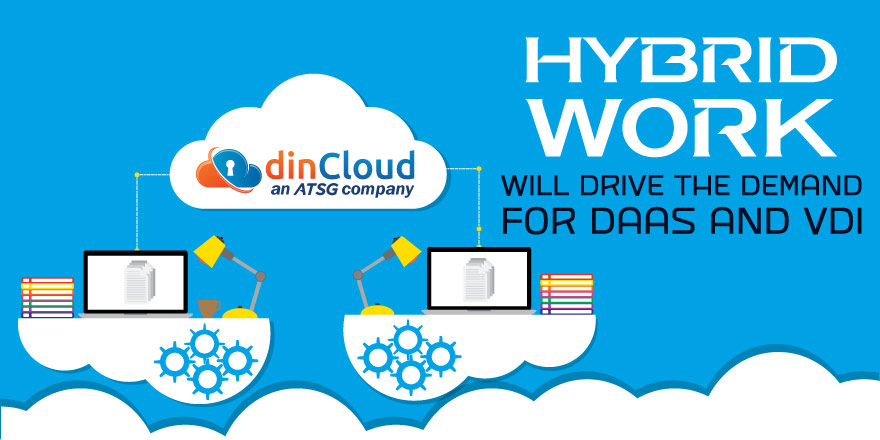The past couple years have been a roller coaster ride in terms of the evolution in digital technologies. Within a matter of days, the whole world pivoted towards a remote work model, which is still pretty much in vogue even to this day.
However, a purely remote work setting is neither feasible, nor beneficial for most of the enterprises out there. While this may work well for entirely technology driven companies, other organizations just cannot work this way, especially over the long term.

Related: Companies like BAE Systems Brace for the Hybrid Multicloud
Hybrid Work – The Perfect Middle Ground
Whether technology driven or otherwise, the way events are unfolding clearly point that the future of work lies in hybrid workforce models. The hybrid work model will be a mix of both remote and in office work routines, and appears to be the perfect middle ground.
Bracing for the Hybrid Work Transition
Most enterprises have hardly matured, or fully stabilized their remote work platforms and practices till date. To the surprise and dismay of IT and business leaders, enterprises will yet again have to brace themselves for another major transition.
This time around, the transition in most of the cases will be from full-on remote work settings to a hybrid workforce. As a result, the IT infrastructures of enterprises will be needing another major review, and re-factoring if necessary.
Related: The Evolution of Cloud Gaming in the Year 2022; and Beyond
The Limitations of Makeshift Remote Work Platforms
As discussed earlier, most of the remote work platforms and mechanisms that were adopted as a direct response to the Covid-19 pandemic lacked thorough homework. At that point in time, the sole objective was to get a remote workforce up and running.
However, as months have gone by, and operational, privacy, control and cyber security related challenges have emerged, enterprises are coming to terms with the limitations of most such makeshift remote work mechanisms.
A Disparate IT Ecosystem
The most pronounced challenge which IT managers and decision makers are facing with most of the makeshift remote work arrangements is an un-coordinated IT ecosystem. This is enough to give sleepless nights to the already stressed out IT professionals.
Some of the most challenging elements of such an ecosystem include reliance on physical devices, like laptops, to store as well as process enterprise data and operations. The enterprise data is also haphazardly spread across multiple physical devices.
In case any such physical device is lost or stolen, valuable enterprise data may either get destroyed or end up in the wrong hands. This can have serious implications for the future reputation and overall viability of any business.
Related: Cloud Computing – A True Savior for Burnt Out Healthcare Workers
DaaS and VDI – The Future of Hybrid Work
Amidst all these challenges, there are two desktop virtualization technologies that can prove a lifesaver for a wide range of enterprises. The major difference between Virtual Desktop Infrastructure (VDI) and Desktop as a Service (DaaS) is the deployment model.
In the case of VDI, the enterprise that deploys virtual desktops does so through its own data center that is retained on-premise. In the case of DaaS however, the virtual desktops are deployed and managed by a Cloud Service Provider (CSP) like dinCloud.
So, the DaaS model offers a lot of additional benefits as compared to VDI, considering the needs of a mid to long term hybrid work environment. Both DaaS and VDI immediately bring along flexibility, scalability, coherence, agility and better security to the table.
In the case of both DaaS and VDI, no valuable enterprise data makes its way to individual employee devices, whether owned by the company or the personal ones. This gives the deploying enterprise peace of mind, and a much elevated compliance posture.
Related: Cloud Computing, IoT, AI and Edge Computing Outlook for Year 2022
Further, DaaS and VDI give your workforce full flexibility and freedom, whether they want to work from their homes, or attend the workplace. This in turn puts enterprises in a much better position when it comes to any further disruptive events, if and when they occur.
Lastly, with flexible digital technologies like DaaS and VDI, enterprises are in a much better position to implement Bring Your Own Device (BYOD) policies. This not only reduces the hardware footprint of the enterprise, but also results in cost savings.
Related: How dinCloud Solutions Make Hybrid and Remote Work a Seamless Affair?
Conclusion
The future of work lies in a hybrid workforce model. It is digital technologies like Desktop as a Service (DaaS) and Virtual Desktop Infrastructure (VDI) that will serve as the true enablers of hybrid workforce models.
If you are an enterprise that also desires to transition towards a secure, reliable and productivity driven hybrid work model, then dinCloud has a wide array of best in class solutions for you.


